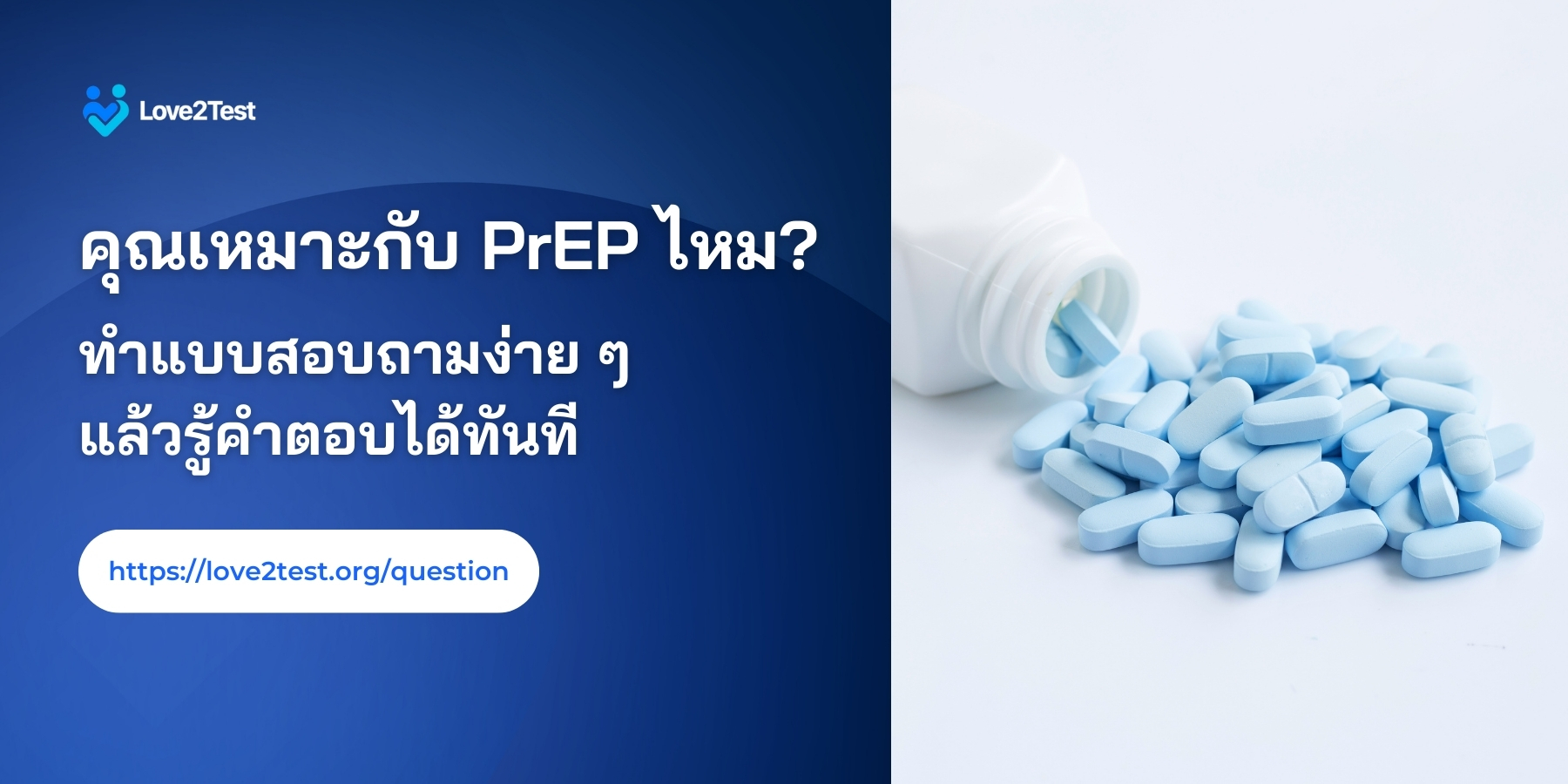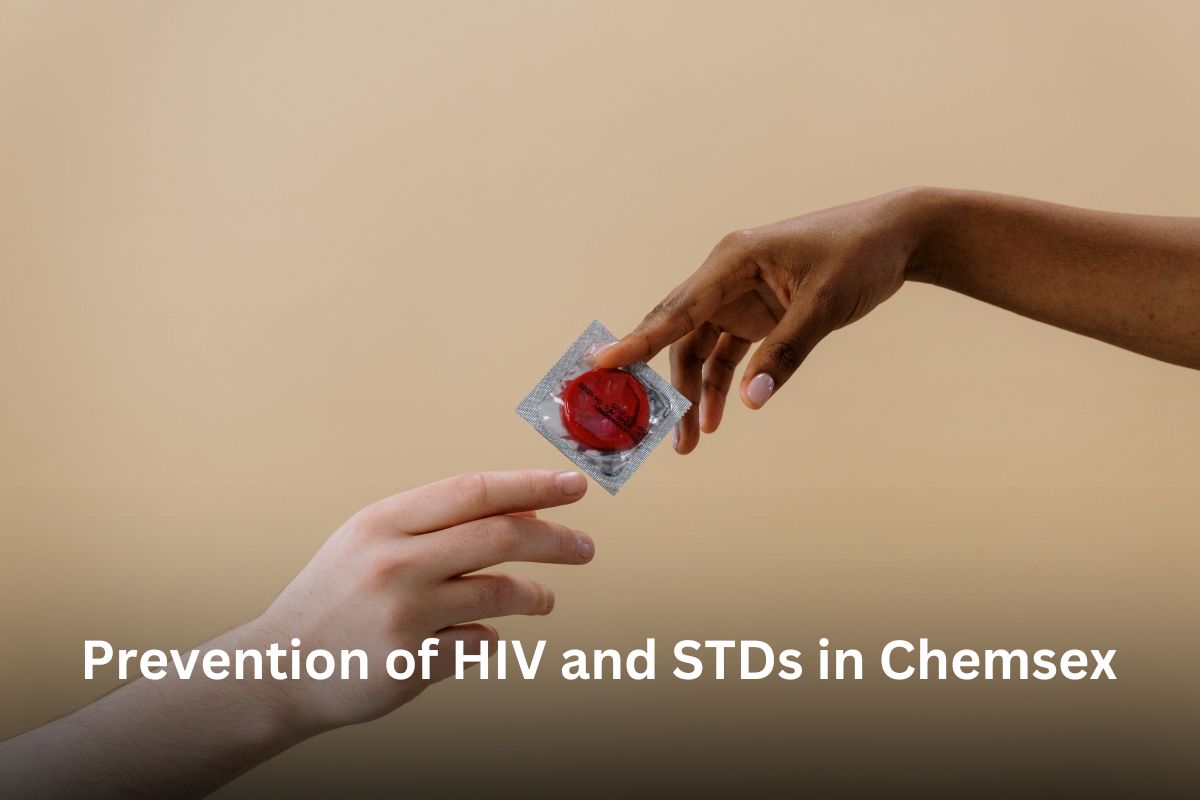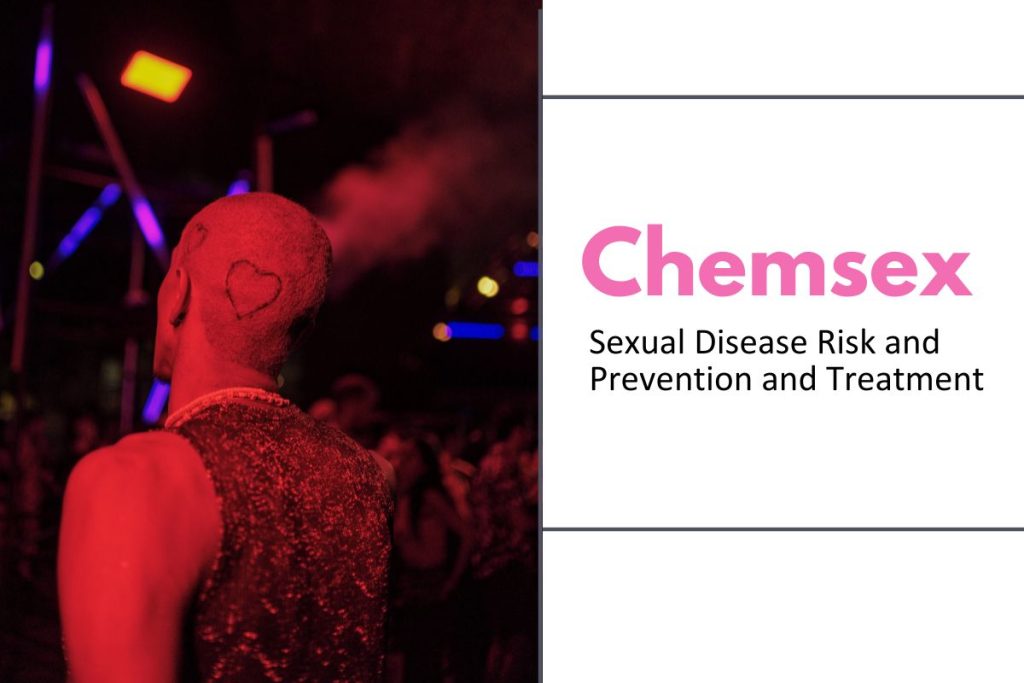Using drugs can impair self-control and decision-making, leading to a decrease in protective behaviors—especially in the context of sexual activities, a practice commonly known as Risk of Chem sex. Effective prevention and treatment strategies are essential to reduce the risks of contracting various infections. This article will explore the health risks associated with chemsex, along with important current prevention and treatment guidelines.
สารบัญ
2. Risk of HIV and STDs from Chemsex

- 2.1 Reduced Decision-Making and Self-Control
- 2.2 Longer and More Frequent Sexual Activity
- 2.3 Multiple Sexual Partners and Partner Switching
- 2.4 Sharing Needles and Equipment
- 2.5 Impact on Mental Health
3. Prevention of HIV and STDs in Chemsex
4. Treatment for HIV and Sexually Transmitted Infections (STIs)
What is Risk of Chem sex?
Chemsex refers to the use of drugs to enhance pleasure or alter experiences during sexual activities. Common drugs involved in chemsex include:
- Methamphetamine (Ice)
- GHB (Liquid Ecstasy)
- Mephedrone
These substances often lead to higher-risk sexual behaviors, which can increase the likelihood of contracting sexually transmitted infections (STIs) such as syphilis, gonorrhea, herpes, and HIV.
Risk of HIV and STDs from Chemsex
Reduced Decision-Making and Self-Control
The effects of stimulant or depressant drugs, such as GHB and methamphetamine, often impair users’ decision-making and increase the risk of engaging in unsafe sexual behaviors, particularly neglecting condom use. This heightened risk leads to a greater chance of contracting HIV and other sexually transmitted infections (STIs), including syphilis, gonorrhea, chlamydia, and herpes. Additionally, the feeling of invulnerability and diminished pain sensitivity during drug use can lead people to overlook their own sexual health.

Longer and More Frequent Sexual Activity
Stimulant drugs commonly used in chemsex can prolong sexual activity, which increases the likelihood of abrasions or injuries to genital areas. These injuries create easier entry points for infections, thereby raising the risk of transmitting HIV and other sexually transmitted infections (STIs). This increased exposure during prolonged and frequent sexual encounters makes the spread of infections more likely.
Multiple Sexual Partners and Partner Switching
Chemsex behavior often involves having multiple sexual partners at once or frequently changing partners. This increase in the number of sexual partners directly raises the likelihood of infection, as the risk of transmission is higher if one partner is infected. Additionally, having multiple partners in a short period can make it harder for individuals to consistently and adequately protect themselves, increasing the chance of exposure to HIV and other sexually transmitted infections.
Sharing Needles and Equipment
Impact on Mental Health
Prevention of HIV and STDs for Risk of Chem sex

Reducing the risk of HIV and other sexually transmitted infections (STIs) among individuals involved in chemsex requires a comprehensive and accessible prevention approach. This includes harm reduction techniques and proper access to sexual health resources:
- Condoms and Lubricants: Consistently using condoms during every sexual encounter is the primary method of preventing HIV and other STIs. Additionally, using appropriate lubricants, such as water-based or silicone-based, helps reduce genital injuries, further minimizing risk.
- Regular Sexual Health Checkups: Regular sexual health screenings help individuals involved in chemsex know their health status. Early detection of infections allows for timely treatment. Those with multiple sexual partners should be tested at least every three months, focusing on HIV, syphilis, gonorrhea, and hepatitis.
- Education and Access to Information: Raising awareness about the risks of chemsex and providing information about prevention methods, such as PrEP, PEP, and the importance of regular sexual health screenings, is crucial. Offering non-judgmental, informative resources creates a supportive environment where individuals feel comfortable seeking advice or treatment.
PrEP และ PEP
- PrEP (Pre-Exposure Prophylaxis): PrEP is an HIV prevention medication for individuals who are HIV-negative but at high risk of exposure. It is an effective method to significantly reduce the chance of contracting HIV. PrEP must be taken regularly as prescribed by a doctor to ensure maximum protection. Providing accessible information and making PrEP easily available is essential for reducing risks in the chemsex community.
- PEP (Post-Exposure Prophylaxis): In the event of accidental HIV exposure, such as unprotected sex or sharing needles, PEP is a post-exposure HIV prevention medication. It must be started within 72 hours of exposure and taken for 28 days. PEP is intended for emergency situations and should not be used as a long-term prevention method.
By adopting these preventive measures, the chemsex community can significantly reduce the risk of HIV and other STIs, fostering better overall health and well-being.
Treatment for HIV and Sexually Transmitted Infections (STIs)
For individuals who are diagnosed with HIV or other STIs, appropriate treatment is crucial to reduce transmission and improve overall health.
- Antiretroviral Therapy (ART) for HIV: ART is the standard treatment for HIV, which can reduce the viral load to undetectable levels. Consistent use of ART not only reduces the risk of transmission but also helps people living with HIV maintain better health and live longer, healthier lives.
- Treatment for Other STIs: Some STIs, such as syphilis, gonorrhea, and chlamydia, can be effectively treated with antibiotics. Regular health checkups and timely treatment help prevent the spread of these infections and reduce the risk of reinfection.
- Mental Health Counseling and Social Support: HIV and STI diagnoses can have a significant impact on an individual’s mental health. Psychological counseling and participation in support groups can help reduce stress, anxiety, and promote emotional resilience in managing health. Support from family, friends, and the community plays a vital role in aiding mental and physical recovery.
- Community and Organizational Support: Organizations that focus on HIV and STI prevention and treatment, such as specialized clinics and LGBTQ+ support groups, are important resources. They provide counseling, access to essential resources, and create a supportive environment for individuals to receive the care they need.
Chemsex is a high-risk behavior for HIV and STI transmission. Reducing these risks requires awareness and access to comprehensive prevention information. Utilizing PrEP and PEP, regular sexual health checkups, access to treatment, and mental health support from the community are all essential strategies for reducing harm and fostering a supportive environment where those involved in chemsex can take care of their health effectively.

